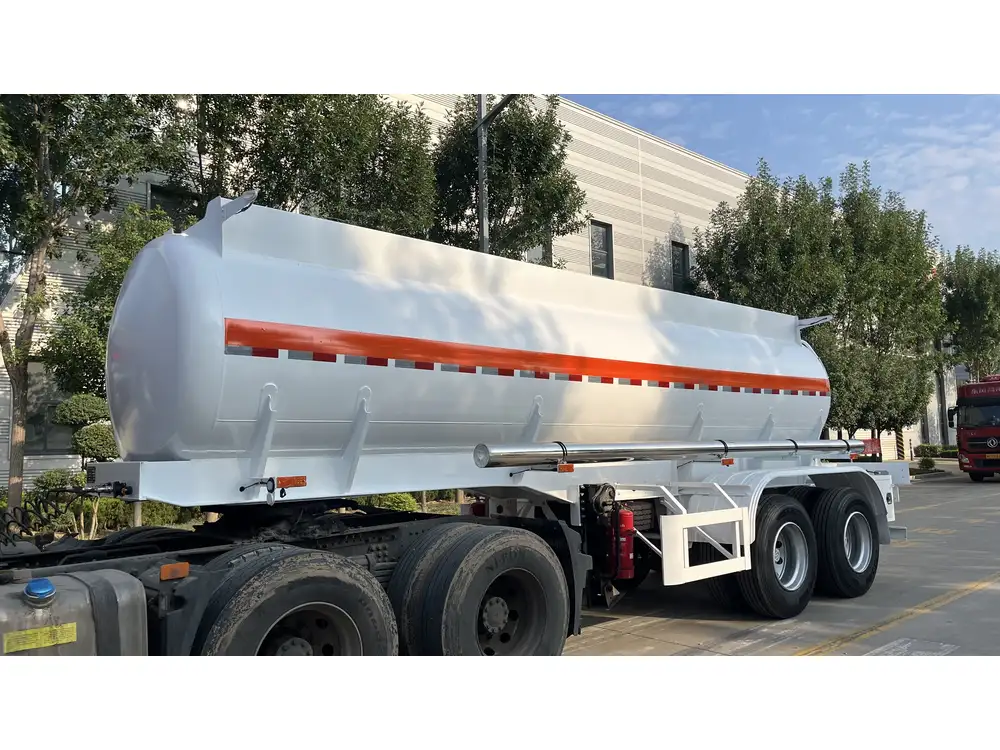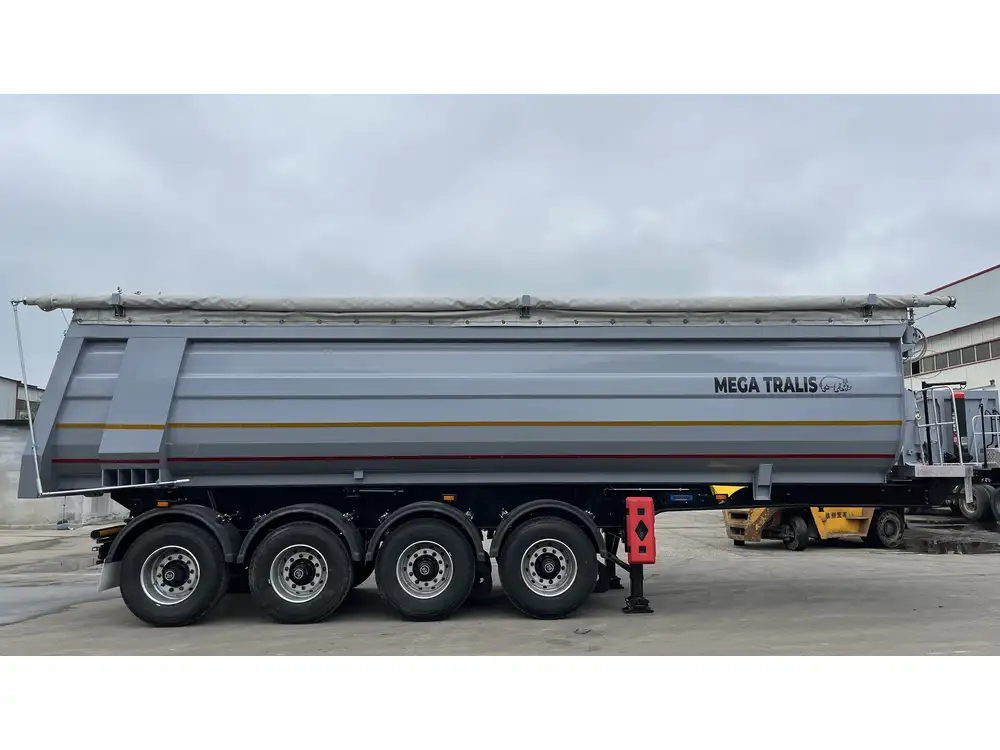Dump trailers have become essential equipment across various industries, including construction, landscaping, and agriculture. They provide a practical solution for transporting and unloading materials with ease. However, despite their robust design, there may come a time when raising the dump trailer frame becomes necessary. This comprehensive guide explores various strategies and considerations to effectively elevate your dump trailer frame.
Understanding the Basics of Dump Trailers
Before delving into the intricacies of raising a dump trailer frame, it’s vital to understand the components that make up a dump trailer. Typically, a dump trailer consists of:
- Frame: The fundamental structure provides support and stability.
- Tipping Mechanism: This could be hydraulic or pneumatic, allowing the trailer bed to lift.
- Axles: Essential for mobility, they bear the load of the trailer.
- Bed: The area designed to carry materials.
- Hitch: Connects the trailer to the towing vehicle.
Importance of a Properly Raised Frame
Raising the dump trailer frame can facilitate several operational benefits:
- Increased Dumping Clearance: Essential for unloading materials in high areas or containers.
- Enhanced Material Handling: Allows for better access, reducing the risk of damaging the trailer or the transported materials.
- Improved Loading Capabilities: Higher frames enable more efficient loading of bulk items, especially when utilizing loading equipment.

Identifying When to Raise Your Dump Trailer Frame
Recognizing the right moment to consider raising your dump trailer frame is crucial to maximizing performance. Here are some indicators:
- Inadequate Clearance: If the trailer struggles to unload materials in specific locations, such as elevated beds or into storage containers, it’s time to assess the frame height.
- Frequent Overloads: Continuous overloading compromises the integrity of the trailer, and raising the frame may help alleviate undue stress.
- Attachment of New Equipment: New attachments like hydraulic lifts or augers may require adjustments to the dump trailer’s frame to maintain functionality.
Tools and Equipment Required for Raising a Dump Trailer Frame
To successfully raise the dump trailer frame, you’ll need the following tools and equipment:
| Tool/Equipment | Function |
|---|---|
| Hydraulic Jacks | To lift the trailer frame safely |
| Wrenches/Sockets | For loosening and tightening bolts |
| Steel Beams | To provide additional height and stability |
| Level | To ensure the trailer is even after modifications |
| Safety Gear | Including gloves, goggles, and boots |
Preparing for the Job
- Safety First: Always wear appropriate safety gear to protect yourself during the operation.
- Choose a Level Area: Ensure the dumping area is flat and stable to avoid accidents during the lifting process.
- Disconnecting the Trailer: Before any modifications, detach the dump trailer from the vehicle to ensure it’s secure and stable during the operation.

Step-by-Step Guide to Raising the Dump Trailer Frame
Step 1: Assess the Current Height
- Measure the Existing Frame Height: Use a measuring tape to determine the current height of the dump trailer frame from the ground.
- Identify Your Required Height: Evaluate the necessary elevation needed based on handling considerations and intended use.
Step 2: Engage the Hydraulic System
- Check the Hydraulics: Before making adjustments, ensure the hydraulic system is functional. Look for leaks or damage.
- Activate the Tipping Mechanism: Slowly engage the hydraulic lift until the trailer bed raises. Be careful not to exceed the rated capacity of the hydraulic system.

Step 3: Support the Frame
- Place Hydraulic Jacks: Position hydraulic jacks at each corner of the trailer for added support while you make adjustments.
- Insert Steel Beams: Depending on the height needed, insert steel beams under the frame.
- Secure the Beams: Use bolts to attach the beams securely to the frame. Ensure the bolts are tightened using wrenches.
Step 4: Reinforce the Frame
- Weld Additional Supports: If needed, welding additional support beams may be beneficial. This step is crucial if you significantly increase the height to maintain structural integrity.
- Check Level: Use a level to check that the frame is even. Adjust as necessary by adding or removing steel beams.
Step 5: Perform a Test Run
- Lower the Trailer Bed: Once all modifications are complete, carefully lower the trailer bed.
- Reconnect to Towing Vehicle: Reconnect the trailer to your towing vehicle and perform a test run to ensure everything operates smoothly.
- Evaluate Performance: Pay attention to how the trailer handles during loading, transportation, and unloading.

Step 6: Regular Maintenance Checks
Post-modification, it’s essential to conduct regular inspections of the trailer frame, hydraulics, and overall structure. Look for signs of wear and tear, and ensure all connections remain secure.
Addressing Common Concerns when Raising a Dump Trailer Frame
Successfully elevating your dump trailer frame can come with challenges. Below are some concerns and solutions:
Stability Issues
- Potential Solution: Ensuring all supporting beams are securely fastened and properly installed can mitigate risk. Regular inspections will also help address any potential stability issues.

Overloading Concerns
- Potential Solution: Always refer to the manufacturer’s weight limits and do not exceed these values, regardless of how high the frame has been raised.
Trailer Balance
- Potential Solution: Maintaining even weight distribution during loading and unloading will help maintain trailer balance, even after modifications.
Conclusion: Optimizing Your Dump Trailer Frame
Raising your dump trailer frame is a significant modification that can optimize its operational efficiency and handling capabilities. By following the detailed steps outlined in this guide, we can ensure that your trailer not only meets its performance expectations but also adheres to safety standards.

Final Considerations
- Consult with Professionals: If you’re uncertain about any steps, or if extensive modifications are necessary, consulting with a professional is advisable. They can provide insight and expertise that ensures the alterations will meet safety regulations.
- Documentation: Keep records of the modifications made to your trailer, including measurements and materials used. This helps in future maintenance and potential resale.
By maintaining vigilance and implementing the practices outlined above, we can ensure our dump trailer remains a reliable workhorse for years to come, ready to tackle any job with ease.



